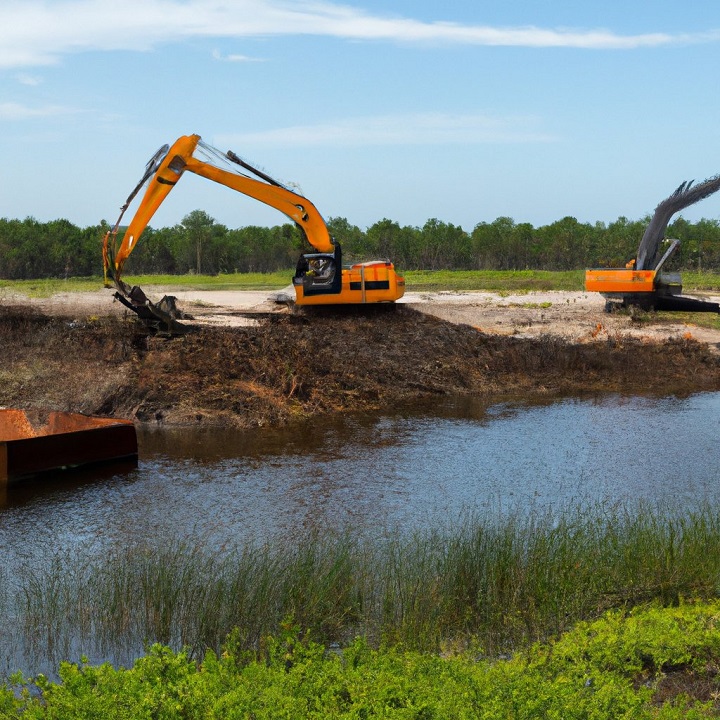Water Retention Ponds
by siteadmin

What Is a Water Retention Pond?
Stormwater retention ponds are designed to store stormwater runoff and limit its rate of flow, in order to avoid flooding downstream. They often incorporate emergent and submerged vegetation along their shorelines for aesthetic reasons.
Retention ponds may appear safe at first glance; however, their steep sides can create dangerous currents at both inlet and outlet points that require safeguards to prevent people from falling into the water.
Prevents Flooding
Due to an increase in impermeable surfaces like streets, sidewalks, driveways, parking lots and roofs in cities and towns, they need a means to effectively manage stormwater runoff. Water retention ponds offer cities and towns this solution by collecting stormwater runoff and diverting it away from flooding areas.
These ponds help manage floodwaters by slowly draining as the water moves downstream, acting as a mediator between stormwater runoff and its destination. Furthermore, these ponds can prevent sediment pollution while also creating an ideal place for wetlands to thrive and reduce any associated water quality issues.
However, poorly maintained water retention or detention ponds can contribute to flooding and soil erosion. They could become clogged with debris, or the sediment levels at the bottom can build up and block outlets. If your property contains one of these basins, ensure that regular inspections take place to keep it in good working condition and avoid dangerous currents from trapping people and vehicles in its path.
Prevents Soil Erosion
Rainstorms create soil erosion that threatens rivers, streams and city sewer systems. A water retention pond diverts stormwater runoff away from buildings, streets, highways and parking lots in order to minimize soil erosion and minimize pollutants entering our natural water supply.
Retention ponds require regular upkeep in order to work correctly, such as regular mowing that doesn't compromise the embankment or cause sediment to enter the pond. Furthermore, any build-up in the outflow orifice must be cleared away to avoid flooding during stormy periods.
Water retention ponds can also serve to mitigate flood damage in residential communities with numerous impervious surfaces, like rooftops and sidewalks. By slowing the speed of water flowing through them and permitting percolation, retention ponds help recharge groundwater sources while protecting against erosion caused by excessive rainfall.
Enhances Water Quality
These ponds are specifically designed to collect storm water during an event and regulate its flow to prevent flooding downstream. Furthermore, they serve as pollutant treatment basins which help lower peak flow rates in nearby streams and rivers.
Retention or detention ponds are among the most widely-used water management structures in modern cities and towns, serving to prevent flooding while safeguarding surrounding areas from soil erosion and protecting homes and businesses from flood waters.
Ponds collect and treat stormwater runoff from buildings, roads, streets, parking lots, and neighborhoods to reduce trash, sediment, and pollutants entering creeks, rivers lakes bays. When planted with native aquatic vegetation ponds can further improve their ability to process stormwater while simultaneously removing excess nutrients loads from it. If properly maintained a pond can also serve as an attractive feature in its surroundings and attract wildlife into an area.
Increases Property Valueupkee
Detention ponds play an essential role in protecting local waterways and communities by mitigating flooding and controlling stormwater runoff from properties, but their upkeep requires upkeep from both homeowners associations and commercial property owners alike. Detention ponds serve a detention purpose designed to mitigate flooding while managing stormwater runoff, making a substantial contribution towards maintaining public health in your locality.
These ponds collect and slowly release stormwater runoff, helping reduce sediment and nonpoint source pollution from entering nearby creeks, rivers, streams and other bodies of water. Furthermore, these ponds can filter out contaminants like metals, pesticides, fertilizers and oils from the water supply.
Retention ponds add beauty and increase property values, but if they're neglected they can quickly become unsightly and lose functionality. By keeping grass mowed regularly and clearing away physical debris regularly as well as cleaning inflow and outlet ducts of physical debris regularly you can ensure your retention pond functions better and protects your property while simultaneously reducing erosion damage, flooding issues, and keeping water quality high.
Gulf Coast Water Retention Pond Repair https://gulfcoastretentionpond.com/
What Is a Water Retention Pond? Stormwater retention ponds are designed to store stormwater runoff and limit its rate of flow, in order to avoid flooding downstream. They often incorporate emergent and submerged vegetation along their shorelines for aesthetic reasons. Retention ponds may appear safe at first glance; however, their steep sides can…
Recent Posts
- Expert Cleaners Lexington Shares Essential Tips for Properly Cleaning Hardwood Floors
- Port St. Lucie Locksmith: Your Trusted Partner for Security Solutions
- Port St. Lucie Locksmith: Your Trusted Partner for Security Solutions
- Cost of Installing a Pool in Cape Coral, Florida: A Rough Guide
- Lighting Up the City with Outdoor Lighting Companies
